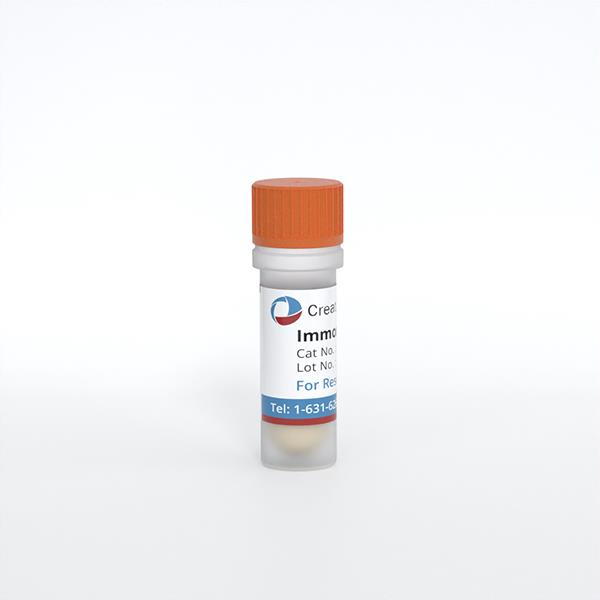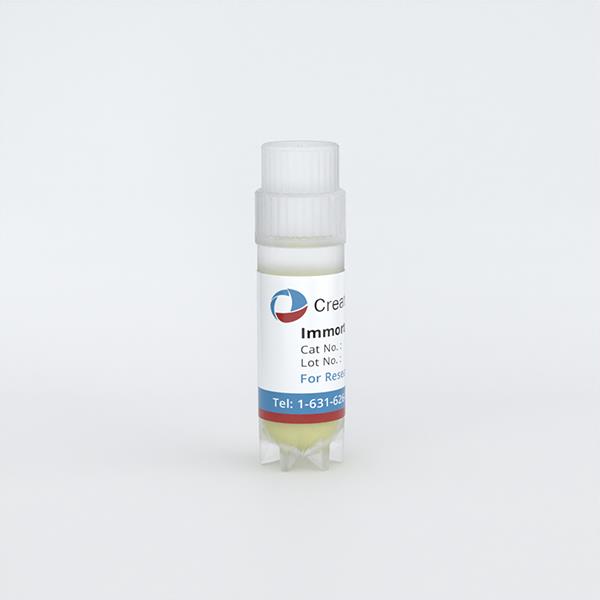
Immortalized Mouse Epidermal Cells (COCA)
Cat.No.: CSC-I9267L
Species: Mus musculus
Source: Skin
Morphology: Polygonal
Culture Properties: Adherent
- Specification
- Q & A
- Customer Review
Cat.No.
CSC-I9267L
Description
The Immortalized Mouse Epidermal Cells (COCA) retains its capacity to differentiate and stratify in response to increased calcium concentration and can form three-dimensional in vitro models. They form epidermis in grafting assays in vivo. It is resourceful as skin modeling and can be used for 3D epidermal models appropriate for skin biology research. Keratinocyte differentiation can be induced by switching the media to high calcium (1.2 mM) containing media.
Species
Mus musculus
Source
Skin
Culture Properties
Adherent
Morphology
Polygonal
Immortalization Method
Spontaneously immortalized in culture
Markers
K5 (undifferentiated), K10 (early differentiation), loricrin and filaggrin (terminal differentiation)
Application
For Research Use Only
Storage
Directly and immediately transfer cells from dry ice to liquid nitrogen upon receiving and keep the cells in liquid nitrogen until cell culture needed for experiments.
Note: Never can cells be kept at -20 °C.
Note: Never can cells be kept at -20 °C.
Shipping
Dry Ice.
Recommended Products
CIK-HT003 HT® Lenti-SV40T Immortalization Kit
Quality Control
1) Functional assays such as the nitrate assay was performed to assess nitric oxide production;
2) ELISA was used to determine the TNFα secretion after inflammatory stimulation;
3) Western blot and immunocytochemistry were used to confirm the expression of microglial specific markers such as CD68 and Iba1 and M1/M2 phenotype-associated protein expression (COX-2/iNOS and Arg-1) after stimulation;
4) Aβ1-42orE. coli-derived bioparticles uptake was used to determine phagocytic activity of SIM-A9 cells.
2) ELISA was used to determine the TNFα secretion after inflammatory stimulation;
3) Western blot and immunocytochemistry were used to confirm the expression of microglial specific markers such as CD68 and Iba1 and M1/M2 phenotype-associated protein expression (COX-2/iNOS and Arg-1) after stimulation;
4) Aβ1-42orE. coli-derived bioparticles uptake was used to determine phagocytic activity of SIM-A9 cells.
BioSafety Level
II
Citation Guidance
If you use this products in your scientific publication, it should be cited in the publication as: Creative Bioarray cat no.
If your paper has been published, please click here
to submit the PubMed ID of your paper to get a coupon.
Ask a Question
Write your own review
Related Products
Featured Products
- Adipose Tissue-Derived Stem Cells
- Human Neurons
- Mouse Probe
- Whole Chromosome Painting Probes
- Hepatic Cells
- Renal Cells
- In Vitro ADME Kits
- Tissue Microarray
- Tissue Blocks
- Tissue Sections
- FFPE Cell Pellet
- Probe
- Centromere Probes
- Telomere Probes
- Satellite Enumeration Probes
- Subtelomere Specific Probes
- Bacterial Probes
- ISH/FISH Probes
- Exosome Isolation Kit
- Human Adult Stem Cells
- Mouse Stem Cells
- iPSCs
- Mouse Embryonic Stem Cells
- iPSC Differentiation Kits
- Mesenchymal Stem Cells
- Immortalized Human Cells
- Immortalized Murine Cells
- Cell Immortalization Kit
- Adipose Cells
- Cardiac Cells
- Dermal Cells
- Epidermal Cells
- Peripheral Blood Mononuclear Cells
- Umbilical Cord Cells
- Monkey Primary Cells
- Mouse Primary Cells
- Breast Tumor Cells
- Colorectal Tumor Cells
- Esophageal Tumor Cells
- Lung Tumor Cells
- Leukemia/Lymphoma/Myeloma Cells
- Ovarian Tumor Cells
- Pancreatic Tumor Cells
- Mouse Tumor Cells
Hot Products

